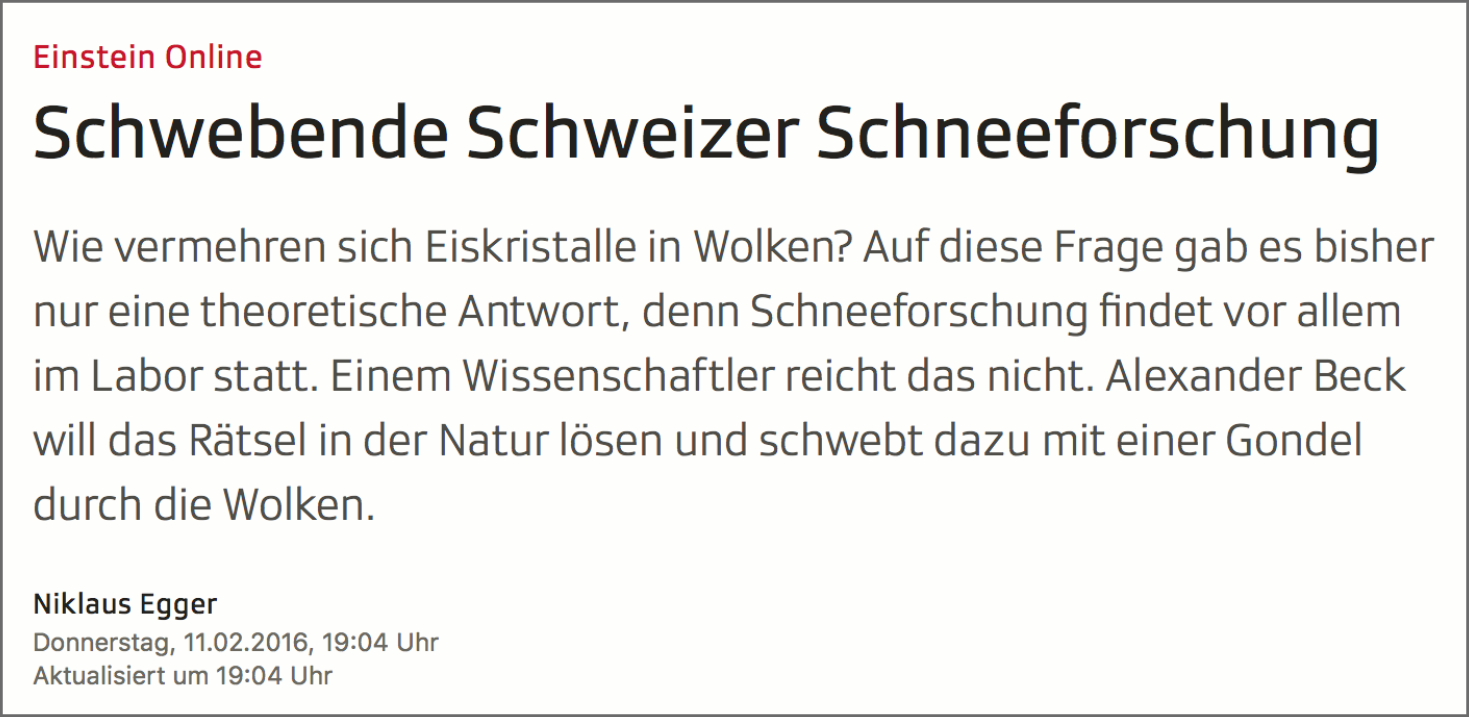Cloud Measurements with Holographic Imager
We developed the field instrument HOLIMO (HOLographic Imager for Microscopic Objects, external page Henneberger et. al, 2013), which uses digital in-line holography to in-situ image ensembles of cloud particles within a well-defined sample volume (i.e. a sample volume independent of particle size and wind speed). Two-dimensional images of single cloud particles between 6 µm and up to several millimeters are algorithmically extracted. Particle shape is analyzed to classify cloud particles larger than 25 µm as water droplets (circular) or ice crystals (noncircular). Thus, phase-resolved size distributions, concentrations, and cloud water contents are obtained. Our latest version of HOLIMO (external page Beck et al., 2017) has an open path configuration and is additionally capable of capturing the spatial distribution of cloud particles within its sample volume. HOLIMO has been used for ground-based studies at different mountain-top research stations and is part of our measurement platforms HoloGondel and HoloBalloon.
HOLIMO
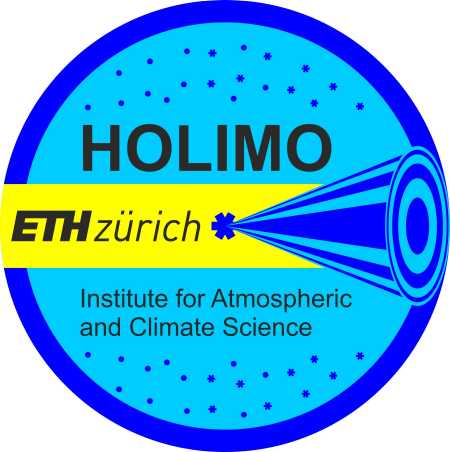
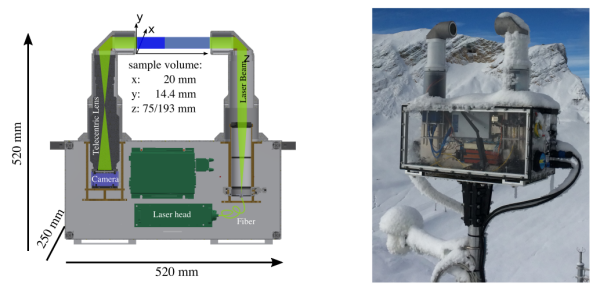

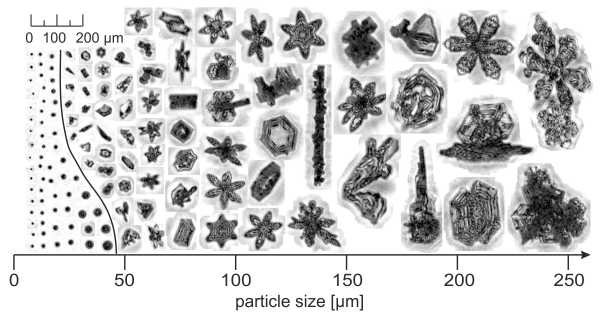

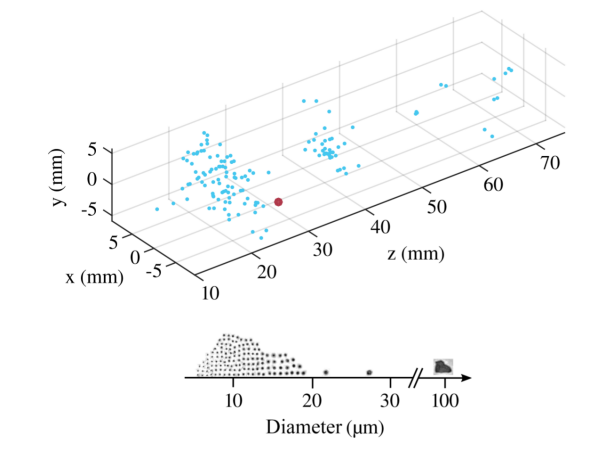
Field campaigns
HoloBalloon
HoloBalloon, our newest measurement platform, is the combination of HOLIMO and a tethered balloon system (175 m3). HoloBalloon can fly up to a height of 800 m above ground level and is retreived with a winch powered by a V8 Chevy engine. HoloBalloon is also equipped with auxiliary instruments to observe temperature, relative humidity and GPS position. Similar to our measurement platform HoloGondel, we can obtain vertical profiles with HoloBalloon with a high spatial resolution due to the relatively low wind speed. Compared to HoloGondel, however, the advantage of HoloBalloon is that we can choose the location of deployment and also the time and height of the flight path.
We conducted a first field campaign in winter 2018 in Aarwangen in the Swiss Plateau studying the formation and dissipation of fog. Vertical profiles of the phase-resolved cloud properties of boundary layer clouds up to 700 m above the surface were obtained. The vertical profiles provide detailed information about the microphysical cloud structure and the meteorological conditions (temperature, relative humidity, 3D wind). This information is crucial to identify and understand the key physical processes and their interactions during the fog formation, development and dissipation phase. More information about our fog campaign can be found on our ETH Blog.
HoloBalloon
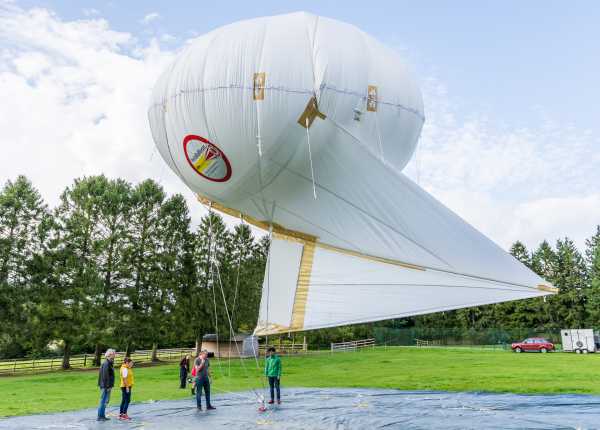

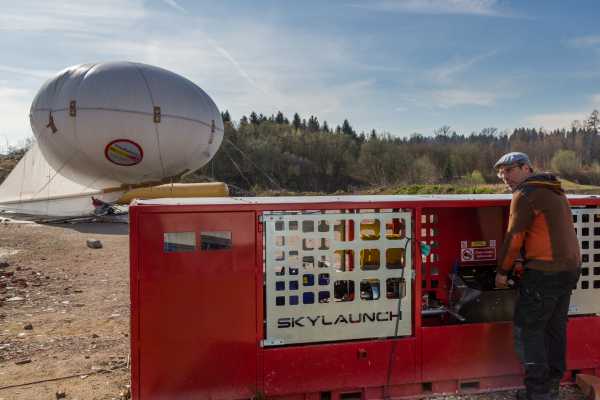
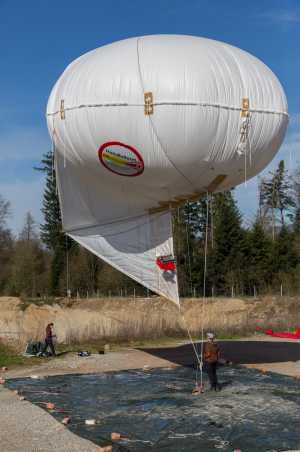

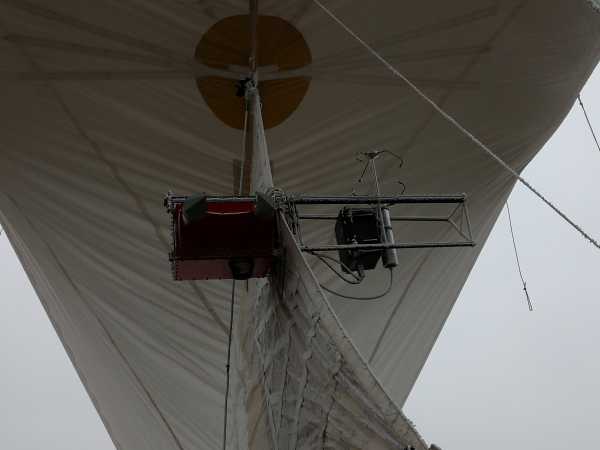
HoloGondel
HoloGondel is the first measurement platform to observe microphysical cloud properties on a cable car. HoloGondel is equipped with a HOLIMO and additional auxiliary instruments to observe temperature, relative humidity and GPS position. With a travelling velocity of a cable car of a few m/s, HoloGondel yields a spatial resolution comparable to those of ground-based measurements. In addition, it is possible to obtain vertical profiles of the microphysical properties within the cloud, because of the vertical distance covered by the cable car.
HoloGondel was deployed the first time in winter 2015 on the cable car between Fiescheralp (2217 masl) and the Eggishorn (2871 masl) in the ski resort Aletsch Arena in Switzerland. During this campaign HoloGondel showed its ability to observe the inhomogeneities and variability of the microphysical cloud parameters from a millimeter scale up to several kilometers (external page Beck et al., 2017). However, a disadvantage of the use of a commercial cable car is that on bad weather days (cloudy and snowy) less tourist are present. Therefore, the frequency of cable car rides is reduced and it is difficult to collect a thorough data set.
Since 2016, HoloGondel has also been mounted on the supply cable car of the Sonnblick Observatory (SBO) in Austria. This cable car covers a vertical distance of 1500 m to the top station at mount Sonnblick (3106 masl) and can be operated on demand. In 2016, two cloud layers separated by a temperature inversion were observed with the Seeder-Feeder process being active.
HoloGondel
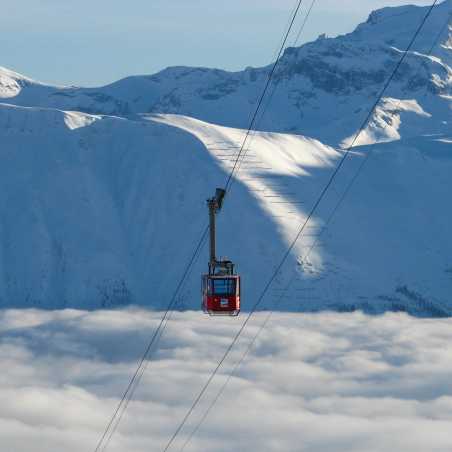
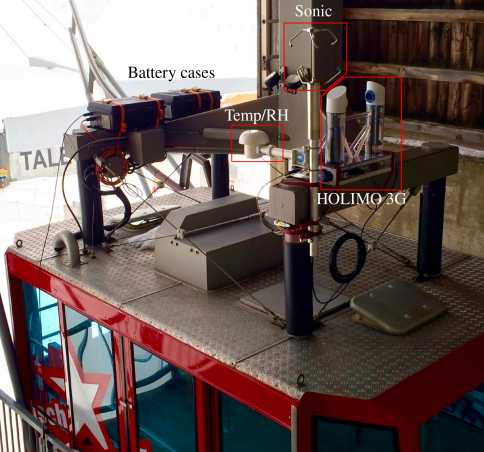
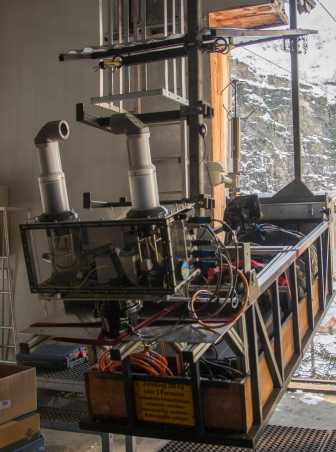
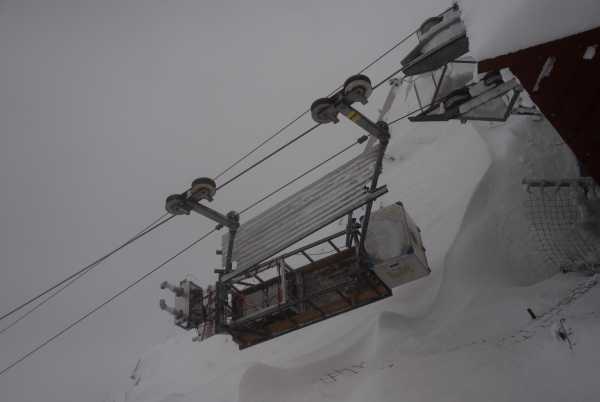
Ground-based Measurements
The last measurement campaign at a mountain-top research station took place at the external page Sonnblick Observatory (elevation 3106 m.a.s.l.) in the Austrian Alps. HoloGondel was mounted on a self-built elevator attached to the meteorological tower of the SBO to observe vertical profiles of the ice crystal number conentration (ICNC) up to 15 m above the snow surface. We observed that the ICNC decreases at least by a factor of two at 10 m, if the ICNC at the surface is larger than 100 L−1. This decrease can be up to one order of magnitude during in-cloud conditions and reached its maximum of more than two orders of magnitudes when the station was not in cloud. With this field campaign we showed that ground-based measurements overestimate the ICNCs. This limits the relevance of ground-based measurements for studying microphysical properties and processes in free floating clouds (external page Beck et al., 2018) and supports the use of novel measurement platforms such as HoloBalloon and HoloGondel.
Earlier versions of HOLIMO had also been frequently deployed at the external page High Alpine Research Station Jungfraujoch (JFJ, elevation 3571 m.a.s.l.) during several field campaigns from 2012 - 2016. The data set of mixed-phase clouds (MPCs) at the JFJ shows that for northerly wind cases partially-glaciated MPCs are more frequently observed than for southerly wind cases. Due to the steeper orography, northerly wind cases are associated with higher updraft velocities, which can leed to simultaneous growth of supercooled liquid droplets if saturation with respect to liquid water is exceeded. As such, two different regimes can be distinguished depending on the steepness of the orography: First, there is a microphysics regime associated with weak updrafts and small supersaturations and ice crystals. Here ice particles grow by diffusion due to the Wegener-Bergeron-Findeisen process. Second, there is a dynamics regime where strong updrafts stabilize the MPC by activating more and smaller aerosol particles and growth of existing cloud droplets. (external page Lohmann et al., 2016).
Ground-based Measurement Campaigns
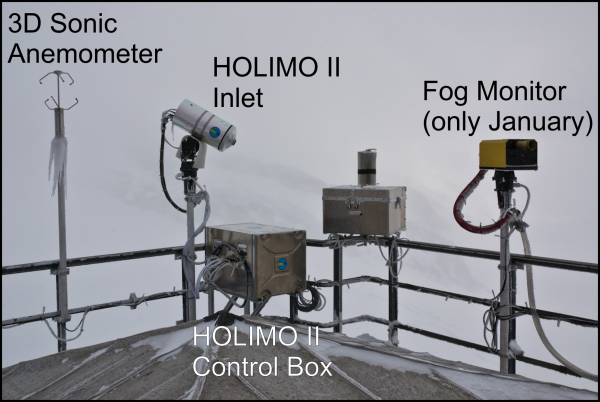
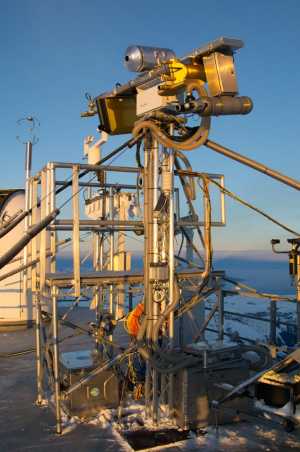
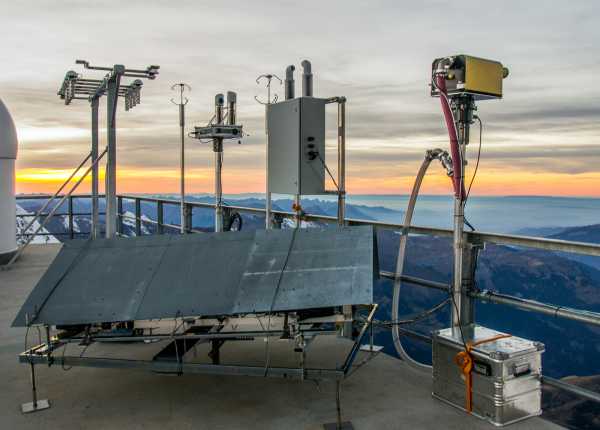
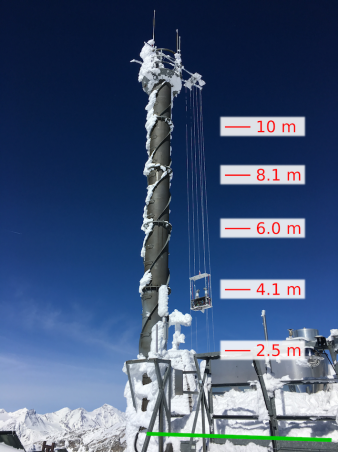
Media
Please note: The following media are only available in German.
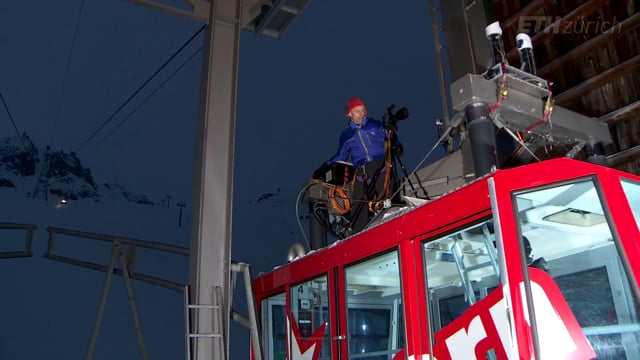
References:
Beck, A., Henneberger, J., Fugal, J. P., David, R. O., Lacher, L., and Lohmann, U.: Impact of surface and near-surface processes on ice crystal concentrations measured at mountain-top research stations, Atmos. Chem. Phys., 18, 8909-8927, external page https://doi.org/10.5194/acp-18-8909-2018, 2018.
Beck, A., Henneberger, J., Schöpfer, S., Fugal, J., and Lohmann, U.: HoloGondel: in situ cloud observations on a cable car in the Swiss Alps using a holographic imager, Atmos. Meas. Tech., 10, 459-476, external page https://doi.org/10.5194/amt-10-459-2017, 2017.
Lohmann, U., J. Henneberger, O. Henneberg, J. P. Fugal, J. Bühl, and Z. A. Kanji (2016), Persistence of orographic mixed‐phase clouds, Geophys. Res. Lett., 43, 10,512–10,519, external page https://doi:10.1002/2016GL071036.
Henneberger, J., Fugal, J. P., Stetzer, O., and Lohmann, U.: HOLIMO II: a digital holographic instrument for ground-based in situ observations of microphysical properties of mixed-phase clouds, Atmos. Meas. Tech., 6, 2975-2987, external page https://doi:10.5194/amt-6-2975-2013, 2013.
